Measure, monitor and manage your message’s reading ease
How do you define readability? Readability measures how easy your message is to read. That measurement is based on factors like sentence and word length.
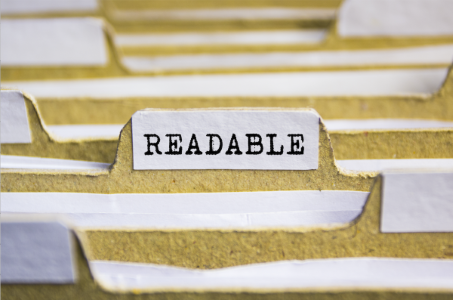
Two elements of readability
Two elements contribute to reading ease, according to readability expert William H. DuBay (PDF): the reader and the writing.
1. The reader. Reader traits that affect readability include:
- Reading skills. Caution: Your reader’s skills might not be as good as you think.
- Prior knowledge. The more they know, the more interested they are. And the higher their reading skill, the more general knowledge they’ll have.
- Interest. How much do they care about, say, the company’s new mission statement?
- Motivation. What carrots and sticks are in play for learning this information?
Easier writing, DuBay writes, can compensate for these issues.
2. The writing. In What Makes a Book Readable, researchers William S. Gray and Bernice Leary identified 228 elements of readability. Then they organized them into four components:
- Content — arguments, structure, coherence
- Style — semantic (words) and syntactic (sentences)
- Design — typography, layout, illustrations
- Organization — chapters, navigation, headings
There’s not a lot you can do about your reader’s skills, knowledge, interest and motivation. But you can make your writing more readable.
Readability tools
The good news is, it is possible to measure, monitor and manage readability to reach more readers. More than 130 years of readability research gives us standards to shoot for. And online readability tools make it easier than ever to make sure we’re meeting these standards.
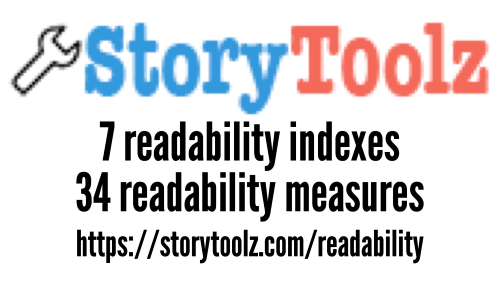
Among my favorite online readability tools: StoryToolz’ Readability Calculator. (Learn about some of my other favorite tools.)
Plug in a chunk of copy, and STORYtoolz will run it through seven readability indexes. STORYtoolz also delivers a wealth of other readability information. You’ll get 34 pieces of data in all, from your longest sentence length to the number of to be verbs.
Ready? Let’s grab your numbers.
How readable is my message?
Run your message through StoryToolz and capture your numbers here:
Reading levels
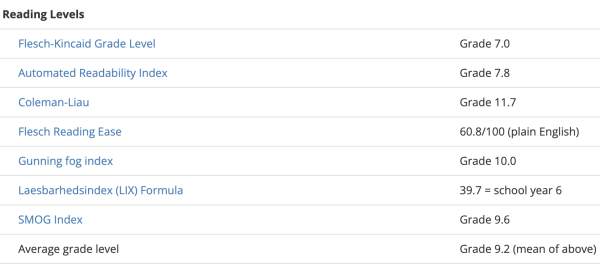
Flesch-Kincaid Grade Level __________________________
Flesch Reading Ease __________________________
(Don’t worry about the others.)
Learn more about readability indexes.
Sentence information
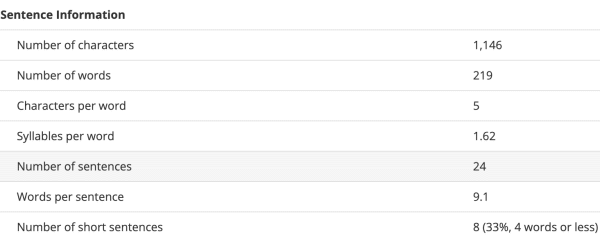
Number of characters __________________________
Number of words __________________________
Characters per word __________________________
Syllables per word __________________________
Number of sentences __________________________
Words per sentence __________________________
Number of short sentences __________________________
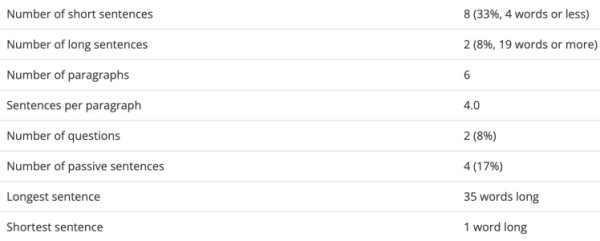
Number of long sentences __________________________
Number of paragraphs ___________________________
Sentences per paragraph __________________________
Number of questions __________________________
Number of passive sentences __________________________
Longest sentence __________________________
Shortest sentence __________________________
Word usage
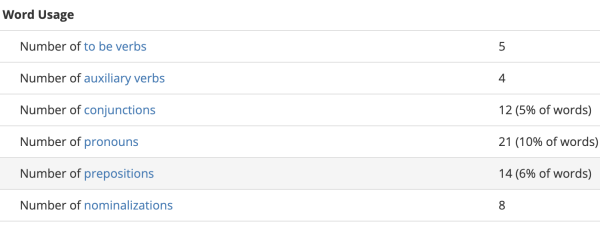
Number of to be verbs __________________________
Number of auxiliary verbs __________________________
Number of conjunctions __________________________
Number of pronouns __________________________
Number of prepositions __________________________
Number of nouned words __________________________
Learn more about word usage and readability.
Sentence beginnings
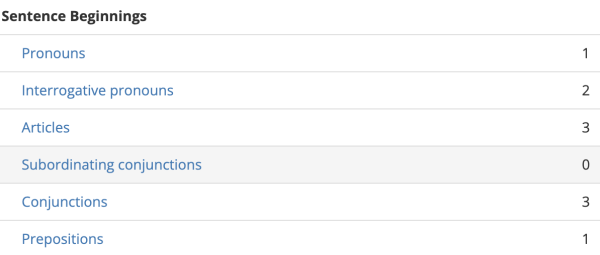
Pronouns __________________________
Question pronouns __________________________
Articles __________________________
Subordinating conjunctions __________________________
Conjunctions __________________________
Prepositions __________________________
Learn more about sentence structure and readability.
Now what?
These content metrics and readability formulas will help you measure readability — how easy or difficult to read your message is. Use these readability scores to identify opportunities to make your messages easier to understand. (Tip: High-school grade-level averages are too high for most audiences.)

Leave a Reply